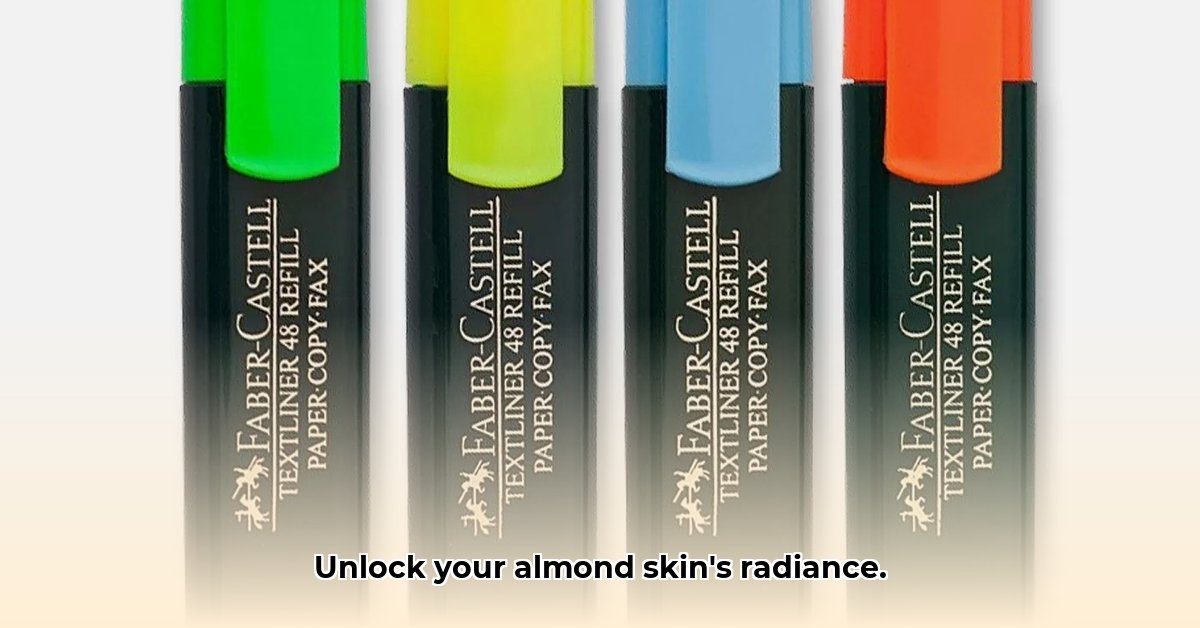Let’s be honest, finding the perfect highlighter can be a total headache, especially if you have almond skin. But don’t worry, getting that gorgeous, healthy glow isn’t as tricky as it seems! This guide is your secret weapon to finding the perfect highlighter for your unique skin tone. We’ll break down everything you need to know, from understanding your undertones to mastering the perfect application technique, so you can finally ditch the highlighter struggles and embrace your inner radiance. Ready to unlock your best glow yet? Let’s dive in! For more on almond skin tones, check out this helpful guide: Almond Skin Tone Guide.
Highlighter for Almond Skin Tone: Your Guide to a Radiant Glow
Achieving a radiant glow with an almond complexion is within reach with the right highlighter. Highlighters can subtly enhance your features, giving you a lit-from-within radiance. This guide will illuminate the path to a radiant, naturally glowing you. We’ll decode undertones and explore various highlighter formulas.
Understanding Your Unique Almond Undertones
Before you can select the right highlighter, it’s important to decipher your undertones. Almond skin is often defined as a beautiful medium complexion, but it’s not one-size-fits-all. The key to finding the right highlighter lies in understanding your undertone. Think of your undertone as the subtle hue beneath the surface of your skin. Determining if you have warm, cool, or neutral undertones can drastically change the effect of your highlight.
- Warm Undertones: Imagine the warmth of honey or the soft glow of a peach. Your skin likely has golden or yellowish hints.
- Cool Undertones: Picture the delicate pink of rose petals. Your skin probably has a pink or rosy cast.
- Neutral Undertones: You’re a lucky blend of both! Your skin possesses a balanced mix of warm and cool tones, making a wide range of highlighters potentially suitable and giving you diverse choices for glowing makeup.
Figuring out your undertone isn’t rocket science. Undertones subtly affect how makeup applies to your skin, so discovering the best one to work with yours is vital. Try these straightforward strategies:
- Vein Check: Look at the veins on your inner wrist in natural daylight. Bluish veins often suggest cool undertones, greenish veins hint at warm undertones, and a mix means you’re likely neutral.
- Jewelry Test: Hold a gold and a silver piece of jewelry against your face. Which one makes your skin look brighter and more radiant? That’s a clue to your undertone! Gold usually complements warm undertones, while silver often enhances cool undertones.
- White Fabric Test: Hold a pure white cloth up to your face in natural light. Does your skin appear more pinkish (cool), yellowish (warm), or relatively balanced (neutral)?
- Sun Reaction: How does your skin react to the sun? Does it tend to burn easily and then perhaps lightly tan (cool)? Or does it tan readily (warm)? Those with neutral undertones may experience a combination.
Remember, these are just guidelines. Some people find their undertones shift subtly depending on factors like sun exposure or even the time of year. Don’t stress over finding the perfect label – just focus on what looks best on you.
Highlighter Formulas: Your Choice of Finish
The right formula will help amplify your glow and will feel comfortable on your skin. The world of highlighters offers a delightful variety of formulas, each lending a unique finish to your complexion. Let’s explore the most common types:
- Powder Highlighters: Powder highlighters are generally long-lasting and buildable, making them a great choice for those with oily or combination skin. They typically provide a more controlled and precise application. However, they might appear a little dry or powdery on drier skin types. Look for finely milled powders to avoid a chalky appearance.
- Cream Highlighters: Cream highlighters are renowned for their effortless blendability, creating a beautifully dewy and luminous finish. These are often a better choice for normal to dry skin. On oily skin, they might appear too shiny, so use sparingly and set with a light dusting of translucent powder. Cream formulas are excellent for achieving a natural, lit-from-within glow.
- Liquid Highlighters: Liquid highlighters deliver an intense glow, ideal for highlighting specific areas of the face. They’re versatile, working well on various skin types. However, they require careful blending to avoid a streaky look. Consider using a damp makeup sponge for seamless integration with your base makeup.
- Stick Highlighters: These offer a convenient and portable option, often with a creamy or balmy texture. They are easy to apply directly to the skin and blend with fingers or a sponge. Stick highlighters are great for on-the-go touch-ups and achieving a targeted glow.
- Balm Highlighters: Balm highlighters provide a subtle, dewy sheen without shimmer or glitter. They are perfect for achieving a “glass skin” effect and are suitable for all skin types, especially those who prefer a natural, no-makeup makeup look.
Experimentation is key! Try different formulas to discover what feels best and complements your skin the most. Have you considered testing formulas on different areas of your face to see which you prefer?
Shade Selection: The Art of Complementing Your Almond Tone
Selecting a shade that complements your undertone will result in a natural-looking glow rather than a stark contrast. Choosing the right highlighter shade depends significantly on your undertone.
- Warm Undertones: Embrace the warmth with golden, bronze, peach, or apricot shades. These will beautifully enhance your natural golden hues, creating a sun-kissed glow. Consider highlighters with a subtle shimmer or a satin finish for a more natural effect.
- Cool Undertones: Opt for rose gold, pink, champagne, or even silver shades. These will complement your rosy undertones, adding a touch of radiance without clashing. Avoid anything too yellow or gold, as it can look unnatural on cool-toned skin.
- Neutral Undertones: You have the advantage of versatility! Experiment with subtle, natural-looking shades like soft gold, champagne, or those with a delicate shimmer. Many universally flattering shades will work wonders. Don’t be afraid to play with different finishes to see what you prefer.
Here’s a handy table to summarize:
| Undertones | Recommended Highlighter Shades | Recommended Finishes |
|---|---|---|
| Warm | Gold, bronze, peach, apricot, copper | Subtle shimmer, satin |
| Cool | Rose gold, pink, champagne, silver, lilac | Pearl, subtle shimmer |
| Neutral | Soft gold, champagne, subtle shimmer, universally flattering shades | Experiment with all |
Application Techniques: Unlocking Your Inner Radiance
The right application technique can make all the difference between a subtle glow and an overwhelming shimmer. Follow these steps for a natural and radiant look:
- Prep Your Canvas: Start with a well-moisturized face. Apply your usual foundation or BB cream for an even base. Hydrated skin will help the highlighter blend more smoothly and prevent it from clinging to dry patches.
- Strategic Placement: Apply your highlighter to the high points of your face: cheekbones, brow bone, bridge of your nose, and cupid’s bow (the dip above your upper lip). You can also lightly highlight the inner corners of your eyes for an added touch of brightness and the center of your chin for added dimension.
- Blending Magic: Use a fluffy brush (for powder highlighters) or a damp sponge (for cream or liquid highlighters) to gently blend the highlighter seamlessly into your skin. Avoid harsh lines or noticeable streaks. The goal is a natural, diffused glow. Use light, circular motions for the most natural effect.
- Less is More: Begin with a small amount of product and gradually build up the intensity as needed. It’s always easier to add more than to remove excess highlighter. Start with a light dusting or a few small dots and blend well.
- Layering (Optional): For a more intense glow, you can layer different highlighter formulas. For example, apply a cream highlighter first, followed by a light dusting of powder highlighter on top. This will create a multidimensional effect that catches the light beautifully.
Troubleshooting Common Highlighter Hiccups
Even makeup experts encounter occasional challenges. What steps can you take to remedy common issues? Here are some solutions to common highlighter problems:
- Uneven Application: Thorough blending is key. Use a clean brush or sponge with gentle, circular motions. Make sure your brush is clean and free of other products that could interfere with the application.
- Excessive Shimmer: Less is more! Use a lighter hand when applying the product and blend it extensively. Consider switching to a highlighter with a more subtle shimmer or pearl effect. You can also try applying highlighter with a fan brush for a more diffused look.
- Cakey Finish: Make sure your skin is properly hydrated. A cream or liquid highlighter might be a better option than a powder formula if you tend to have dry skin. Exfoliating regularly can also help prevent a cakey finish.
- Highlight Doesn’t Show Up: If your highlighter isn’t showing up, make sure you’re using a shade that is lighter than your skin tone. You may also need to build up the intensity by applying multiple layers.
- Plant-based Diet Colitis Remission: Success Stories - December 18, 2025
- Plant Based Diet Breast Cancer: Research-Based Benefits - December 16, 2025
- Plant-Based Diet Ulcerative Colitis Remission: Proven Benefits - December 15, 2025










